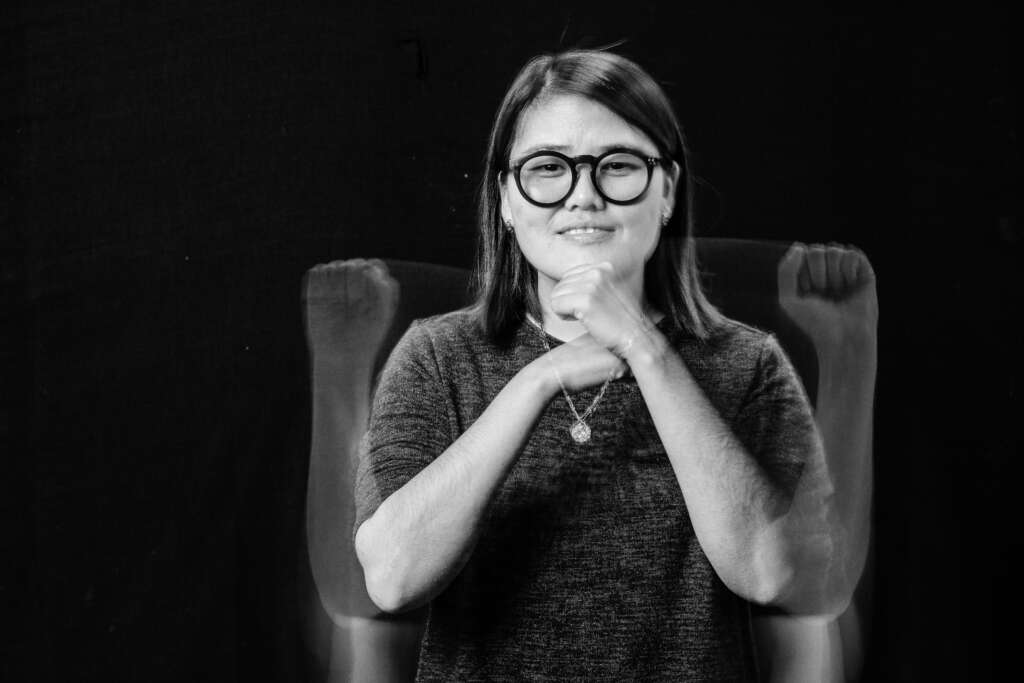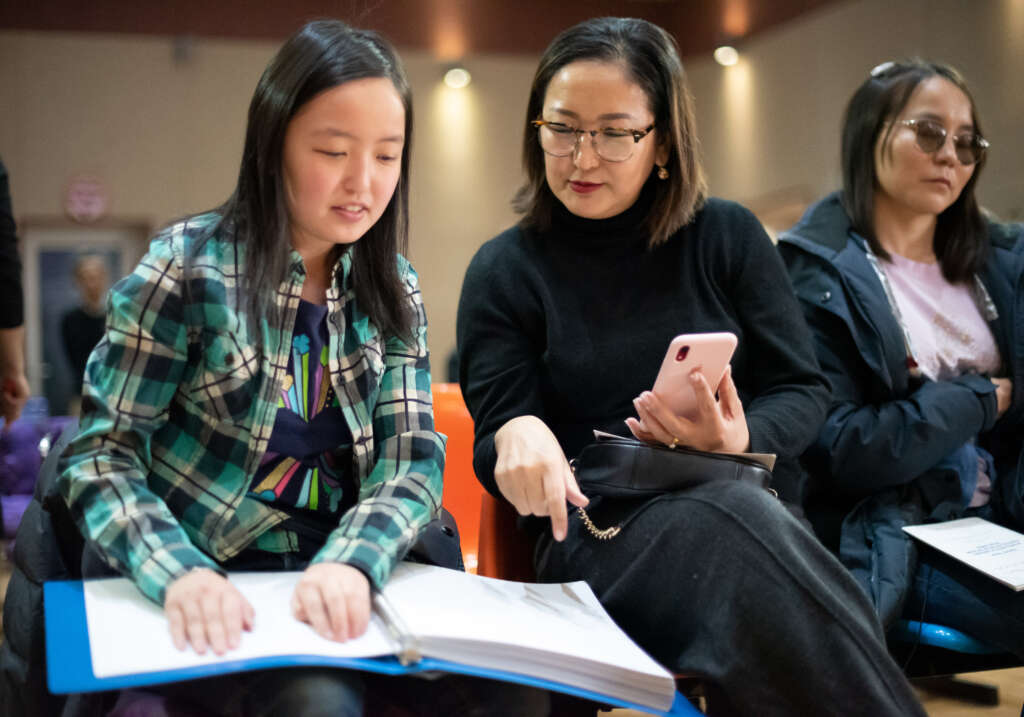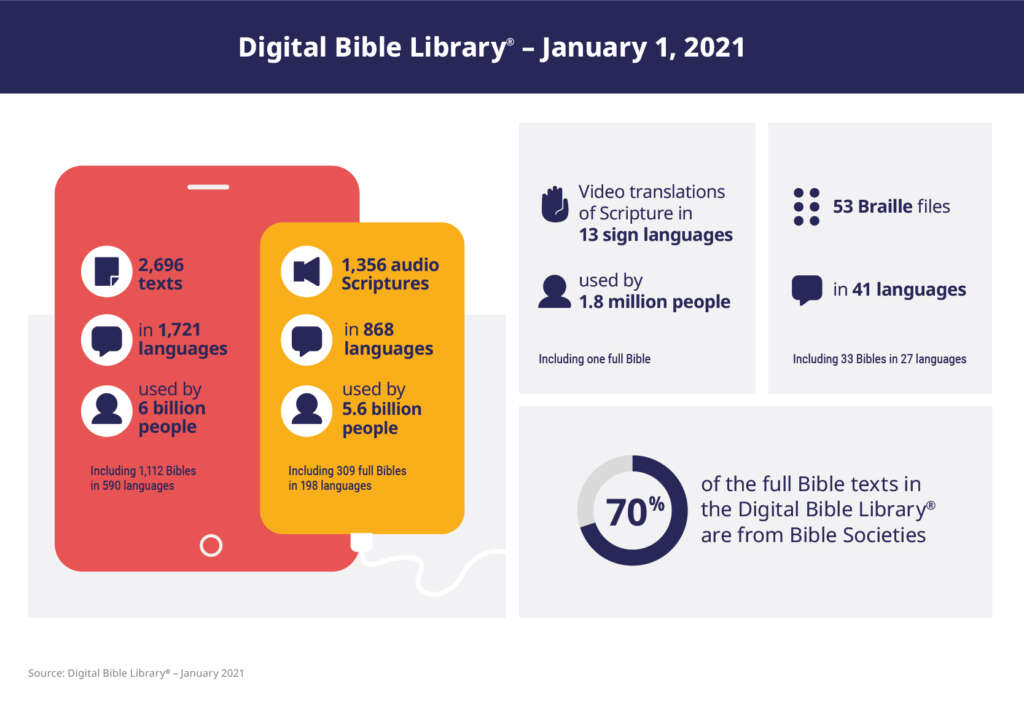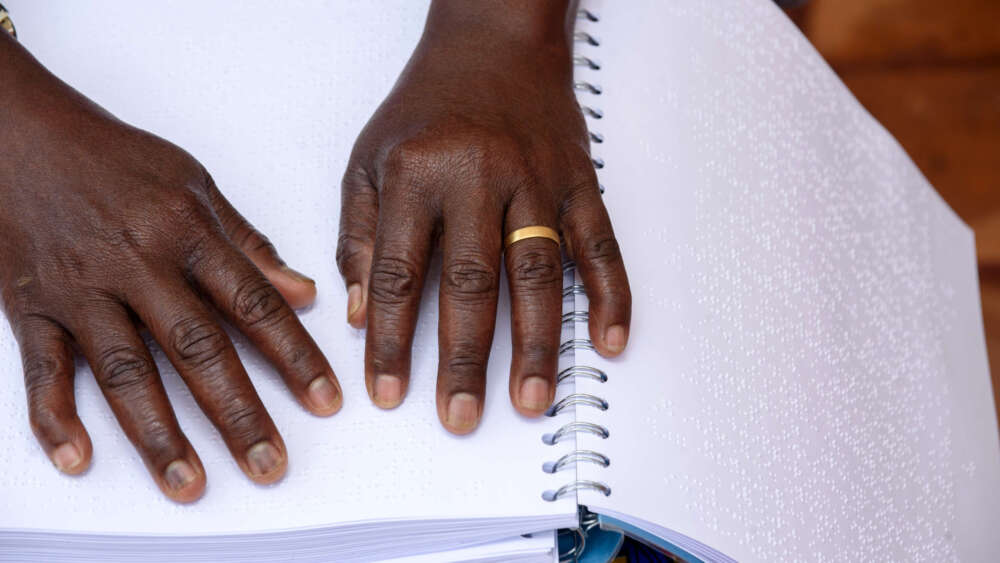'New energy and urgency' fuels Bible translations for people who have a disability
2020 was a challenging year. For everybody. Families and friends had to find new ways to communicate, the limits of technology were tested, and feelings of social isolation and disconnection were faced by many for the first time.
Yet one area where work continued – and even flourished – was in Bible translations, with Bible Societies around the world completing Scripture translations in 66 languages, able to now be used by 707 million people.
Six language groups even received the full Bible for the first time, including the USA Deaf community.
The USA Deaf community celebrated the completion of the American Sign Language Bible – just one of the many projects undertaken by Bible Societies around the world in 2020 that is aimed at opening the Bible to people who have a disability.
Opening God’s Word for Deaf communities
Eternity has reported many times on the ongoing Auslan Bible translation work that Bible Society Australia is a partner to – with a long-serving and faithful team. Auslan is one of the world’s estimated 400 sign languages and is predominantly used in Australia.
American Sign Language is used by the 408,000 person Deaf community in the United States. And as if last year, it is the only sign language in the world to have the full Bible.
“After many years of being misunderstood, there is now new energy and urgency behind the task of opening up the Bible for over 400 sign languages” – Chris Dale
“The completion last year of the very first Bible in a sign language – American Sign Language – after nearly four decades of work was a great encouragement to sign language translators and Deaf communities in other countries,” says United Bible Societies Deaf Ministry Coordinator Chris Dale.
The American Sign Language Bible was translated by Deaf Missions with the support of various partner agencies, including American Bible Society, with a dedication service held online due to COVID-19 restrictions.
Used by a massive 2.1 million Deaf people, another 16 sign languages also received first or additional Scripture portions in 2020.
“After many years of being misunderstood, there is now new energy and urgency behind the task of opening up the Bible for over 400 sign languages,” Dale said.
“Despite serious challenges caused by the pandemic, Deaf translators found new ways to co-operate, supported by the very timely development of new software tools, which allowed them to make progress,” said Dale.
Opening the Bible to people who can’t read or write

Javza, a member of the team working to translate the Bible into Mongolian Sign Language, signs the word for ‘salvation’.
Javzaa (pictured) is a member of the team working to translate the Bible into Mongolian Sign Language. She is passionate about her work.
Like 99 per cent of Deaf Mongolians, Javzaa can’t read or write. She was frustrated at only being able to experience the Bible through the sign language interpreter at the Deaf church she attends. She is delighted to be part of the Mongolian Sign Language translation team, which completed five chapters of Matthew last year.
“There are many souls in need. The one help they need most is the Word of God in sign language,” signs Javzaa.
Increasing Scripture access for People with Visual Disabilities

Saikhantsetseg, 19, reads from one of the volumes of the newly-published full Braille Bible in Mongolian, which was launched in late 2020. Image: Mongolian Union Bible Society.
While COVID-19 hindered Braille Scripture distribution and engagement work in many countries, 2020 saw unprecedented progress in making the full Braille Bible available in more languages.
Five languages received the full Braille Bible, three of them for the first time (and Braille portions were published in another two). A total of 48 languages now have the full Bible in Braille.
“It has been amazing to see how technical developments with new Braille transcription software and a new Braille file archive in the Digital Bible Library have resulted in a high number of new complete Braille Bibles published in one year,” said Ingrid Felber-Bischof, who coordinates UBS’s global service for People with Visual Disabilities.
“In former years this process would normally have taken five to ten years!”” she exclaimed.
“When I read the Braille Bible it is more interesting and alive” – Saikhantsetseg
Saikhantsetseg (pictured), 19, who lost her sight as a child, has benefited from the Mongolian Union Bible Society being able to make the full Braille Bible available in Mongolian in record time. She read from the new Bible at the dedication ceremony and explained that, although she enjoys listening to the audio Bible, being able to read the Bible for herself is extra special.
“It’s amazing to be able to read it in Braille,” Saikhantsetseg said. “I find it more understandable and I feel closer to the things written in the Bible. Listening to the audio Bible is good. But when I read the Braille Bible it is more interesting and alive.”
Digital Bible Library puts Scripture at people’s fingertips
The Digital Bible Library (DBL), which celebrates its tenth anniversary this year, is central to the goal of making the Bible available and accessible to everyone. It serves as a repository for Bible translations in different formats completed by UBS and other Bible translation agencies, and enables the efficient sharing of the Bible through websites and apps, such as YouVersion.
The DBL contains 2,696 texts in 1,721 languages used by six billion people, including 1,112 Bibles in 590 languages. About 70 per cent of the full Bibles in the DBL are provided by Bible Societies.
Also stored in the DBL are audio Scriptures in the languages of 5.6 billion people, and video translations of Scripture in 13 sign languages, used by 1.8 million people.
In 2020, the first Braille Scripture files were added to DBL, following the development of new Braille transcription software. The new software and the ability to store the files in the DBL have made it much quicker and easier for Bible Societies to produce Braille Scripture in languages which have translations available. The DBL houses 53 Braille files in 41 languages, including 33 full Bibles in 27 languages.

Image: Nate Fussner / United Bible Societies
United Bible Societies is a fellowship of around 150 Bible Societies working in 240 countries and territories, including Bible Society Australia. Together, they are the world’s biggest translator, publisher and distributor of the Bible. Bible Societies are also active in areas such as HIV/AIDS prevention, trauma healing and literacy. Bible Societies work with all Christian Churches and many international non-governmental organisations. For more information, click here.
Learn more about the work Bible Society Australia is undertaking in Indigenous Bible Translations and Auslan.





